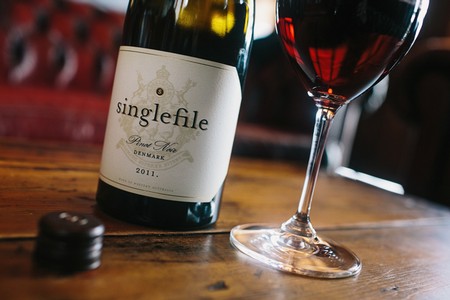Common Wine Myths Debunked!
Common myths about wine, its enjoyment and ageing potential have developed after years of tales and mistruths have become gospel. But some of these perceptions are simply untrue. And we’re here to bust them. Take a tour of these common falsehoods to discover why truth can be stranger than fiction.
Whites are for summer, reds are for winter
Chilled whites are super refreshing on a hot summer’s day. But have you ever chilled a light red on a balmy evening? Superb. Rosés and lighter reds, like Pinot Noir or Cabernet Franc, can do with a quick blast in the fridge, down to about 14°C. Heavier reds can cope with 18°C or so. If reds are served too warm, they can taste one-dimensional, flabby and muddy. Cooling a red wine tends to tighten its aroma and flavour. If in doubt, chill. The French do it.

Expensive is always better
Elaborate wine labels, marketing, advertising, ageing and production all cost money – and these costs are generally passed on to the wine buyer. That’s not to say those wines are not worth every penny. But it’s definitely worth judging a wine by its flavour and characteristics, not by its hype. Smaller scale wineries with less advertising and marketing costs can produce wines that are just as impressive as those with all the puffery behind them.

Screwcap wines can’t age
The jury is still out but most people believe wines under screwcap can age just as well as wines finished with a cork. Some argue the slow ingress of oxygen through cork plays a vital role in the ageing of the wine. Others believe this amount is negligible in a sound cork and that any oxygen is actually harmful to the wine.
Winemakers have been experimenting with screwcaps for years and many testify that quality control is much easier with screwcapped wines and long-term ageing studies have shown very positive results. Screwcaps definitely reduce the occurrence of wine faults and cork taint.

Old wines must be decanted
Not all old wines require decanting. Bottles with 15 or more years of age often open up better in a glass, rather than fade in a voluminous decanter. The older the wine, the more fragile its properties.
Whites with fish, reds with meat
This is not a bad rule for newbies. But it’s by no means an absolute. The most appropriate wine match for the richness of a grilled salmon steak is a red, like a Pinot Noir, for instance. An effective rule is to consider how a dish is prepared, then look for the best match. Has the protein been grilled or poached, sautéed in butter? Chilli? While a grilled steak might call for a robust red, a sautéed eye fillet with béchamel sauce and rosemary potatoes might work better with a rich, full-bodied white, like a Chardonnay.

Only leftover whites should be refrigerated
Simply untrue. Cold temperature acts as a natural preservative – as efficiently for red wines as it does for whites. The only difference with chilling leftover red wines is that it will need to head towards room temperature before drinking it again.
Blended wines are second-rate to non-blended wines
Aussie wine drinkers have developed a predilection for single variety wines, which certainly provide winemakers with the opportunity to bring varietal characteristics and vineyard provenance to life. But in old world wines, blends are the lifeblood of many renowned wineries. When winemakers take a Malbec and mix it with a Cabernet Sauvignon, or any other grape, it can be so much better than one of these varieties on its own. The whole is often greater than the sum of its parts.
